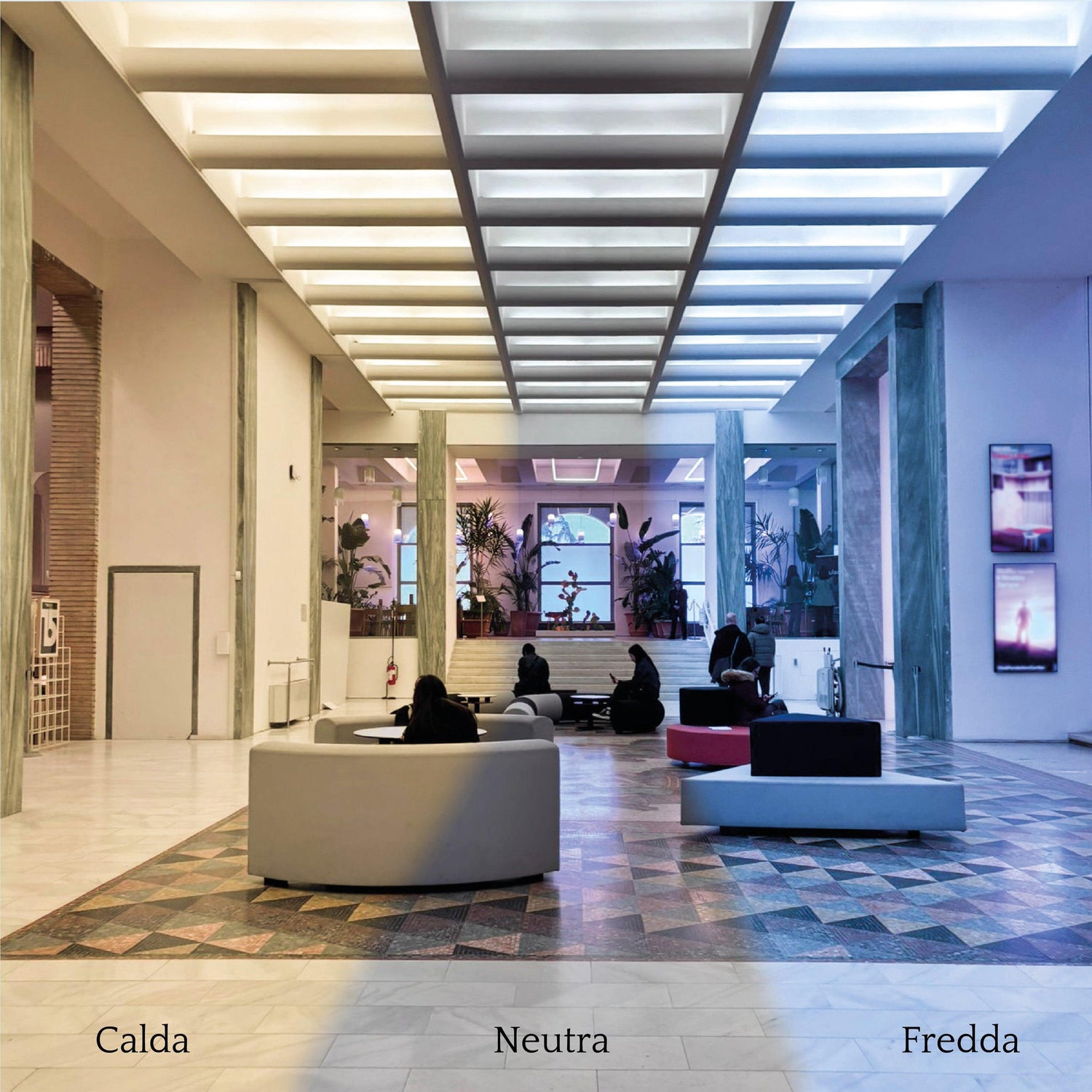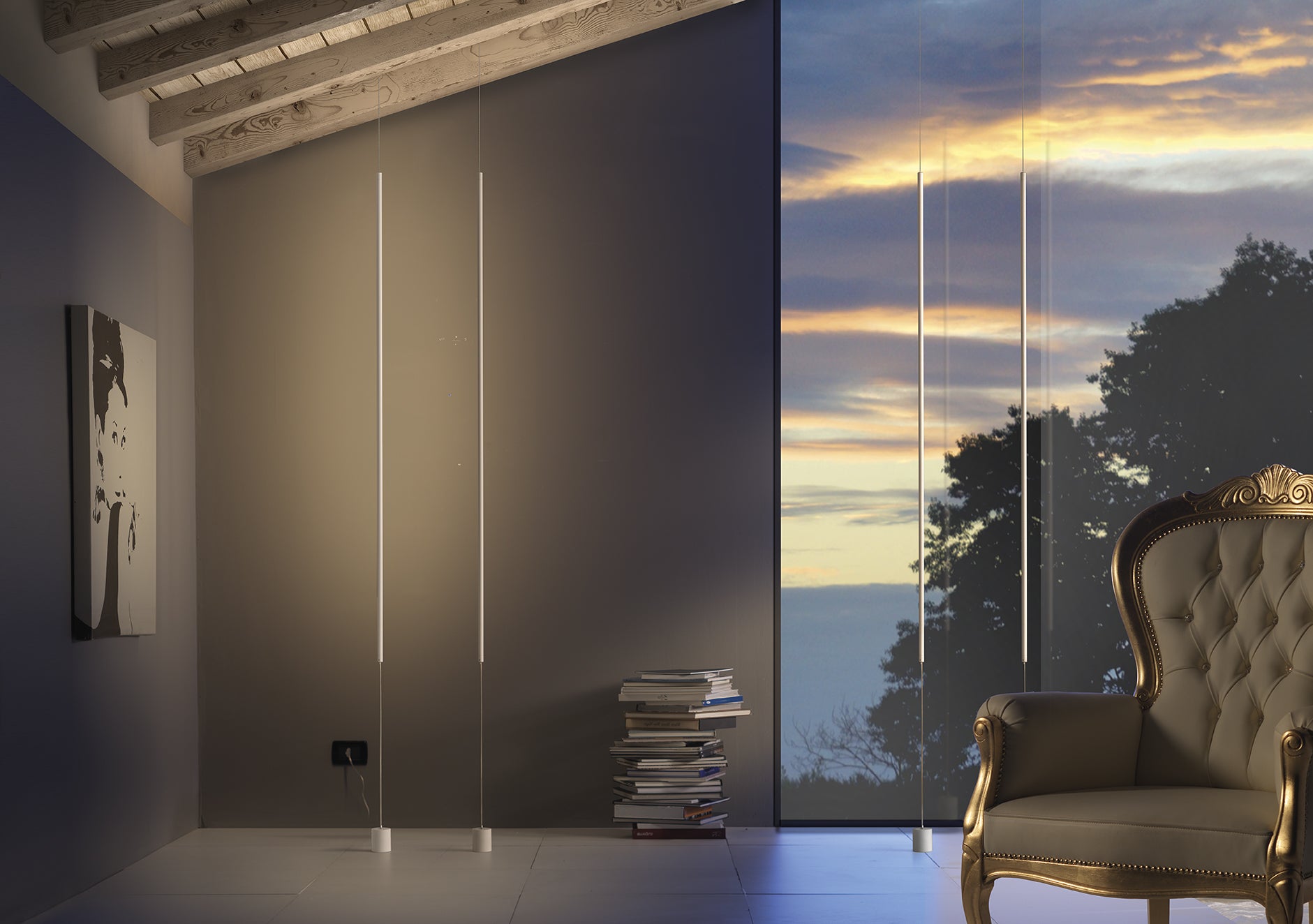When it comes to lighting, one of the most important aspects to consider is Color Temperature . But what is it? And how do you choose the right light for each room in your home?
In this article, we will guide you to discover this fascinating concept, with practical advice for creating perfect atmospheres in every room.
What is Color Temperature and why is it important?
Color Temperature is measured in Kelvin (K) and indicates the tone of light emitted by a light source. The lower the value, the warmer and more yellowish the light will be. On the contrary, higher values correspond to a cold and bluish light.
- Warm light (2700K - 3000K) : soft, enveloping, with golden shades that evoke intimacy and relaxation.
- Neutral light (3500K - 4000K) : balanced, similar to natural daylight, perfect for dynamic and convivial environments.
- Cold light (4500K - 6000K) : bright, stimulating, ideal for promoting concentration and efficiency.

The choice of Color Temperature is not only an aesthetic question, but also affects the well-being and functionality of spaces.
Practical guide: the ideal light for every environment
Living room and relaxation areas: warmth and welcome
The living room is the heart of the house, the place of relaxation and sharing. Here, a warm light (2700K - 3000K) creates a welcoming and comfortable atmosphere. Floor lamps and wall lamps with golden tones will envelop the space with a sense of tranquility.
Bedroom : a haven of serenity
To promote rest, the light must be soft and soothing. Opt for light bulbs with warm tones (2700K - 3000K) and use adjustable light sources, such as dimmable bedside lamps , to adapt the intensity according to the time of day.
Kitchen : energy and conviviality
An active space like the kitchen requires balanced lighting (3000K - 4000K) to ensure visibility and comfort. A mix of diffused lighting will help create a practical yet welcoming environment.
Bathroom : clear and enveloping light
For a feeling of well-being, the ideal is a neutral light (3500K - 4000K), similar to natural light.
Office or study : concentration and harmony
A workspace needs a cool but not aggressive light (4000K - 4500K), to stimulate productivity without tiring the eyes. Desk lamps with intensity regulation help to find the right balance.
Exterior and garden : balance between functionality and atmosphere
For outdoor lighting, the choice of Color Temperature depends on the desired effect:
- Warm light : perfect for terraces and gardens, it creates a relaxing atmosphere for outdoor evenings.
- Neutral light : suitable for entrances and paths, for harmonious and welcoming lighting.
- Cold light : ideal for safety areas, it ensures visibility without being excessively rigid.
If you use outdoor solar lights , make sure to choose models with adjustable color temperature to adapt the lighting to different needs.
FAQ: The most common questions about Color Temperature
What is the best color temperature for the living room ?
The warm light (2700K - 3000K) is perfect for creating a welcoming and relaxing environment.
Which light helps you sleep better?
Warm lights (2700K - 3000K) promote relaxation and improve the quality of sleep.
Is warm or cold light better in the kitchen ?
The neutral light (3000K - 4000K) balances comfort and functionality well, perfect for preparing food.
Conclusion
Color temperature is essential to create the right atmosphere in any room. A warm light (2700K - 3000K) makes spaces welcoming and relaxing, perfect for living rooms and bedrooms. A neutral light (3500K - 4000K) is ideal for dynamic environments such as kitchens and bathrooms, while a cold light (up to 6000K) stimulates concentration, essential for offices and studies.
The choice depends on the function and shape of the spaces: each environment has specific needs.
Not sure which solution is best for you? Contact Lumiavera experts for a free personalized consultation 💡




